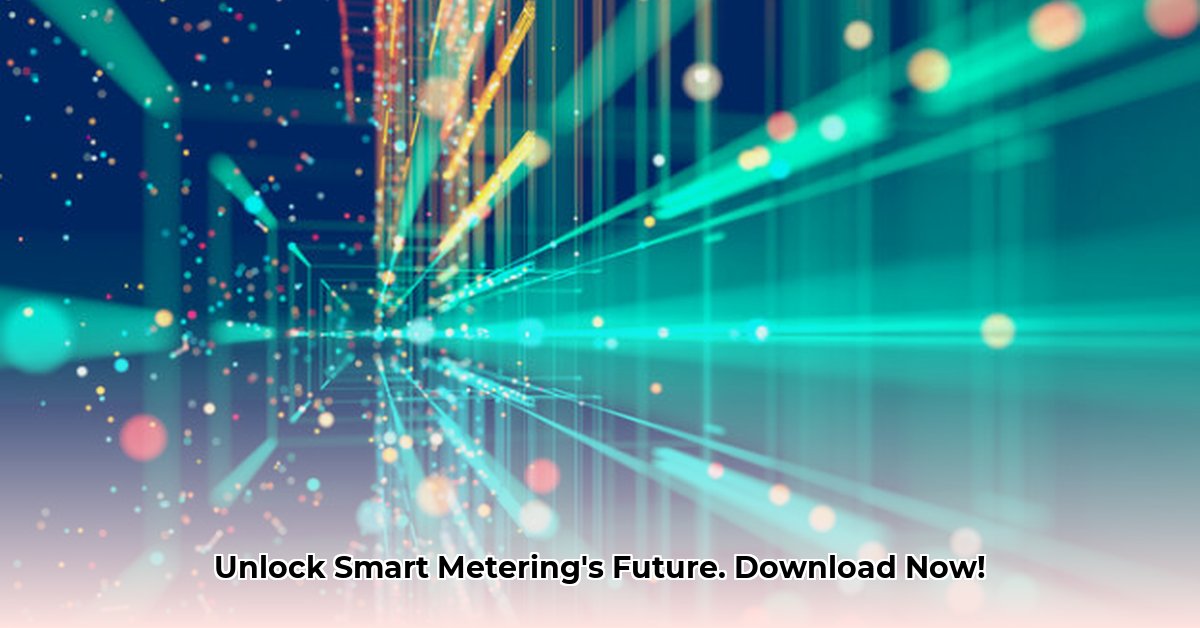
Finding a free download of the DLMS Blue Book PDF might prove challenging, but this document is crucial for anyone working with smart meters. It's essentially the instruction manual for how smart meters communicate, forming the backbone of efficient energy management and smart grid infrastructure. Let's explore why the DLMS Blue Book is so important.
Understanding the Language of Smart Meters: DLMS/COSEM
Imagine a world where all your smart devices spoke different languages – pure chaos. DLMS/COSEM (Device Management System/Common Object Model for Energy Service Management) acts as the universal translator for the smart grid. This standard ensures seamless information sharing between smart meters and utility companies, facilitating efficient energy management. The DLMS Blue Book serves as the comprehensive guide to this language, detailing its structure and functionality. Without it, smart grids would function far less effectively. Is it any wonder that understanding this standard is critical for efficient energy management in the age of the Internet of Things (IoT)?
The Blue Book and Long-Range Wireless Networks: Expanding the Possibilities
Recent updates to the DLMS standard, detailed in the updated Blue Book, emphasize its compatibility with Low-Power Wide Area Networks (LPWANs). LPWANs, such as LoRaWAN, NB-IoT, and Wi-SUN, enable long-distance communication with minimal power consumption. This is akin to providing your smart meters with a highly efficient, long-range communication system. This advancement significantly expands the applications of DLMS/COSEM beyond electricity consumption monitoring. Now, it's applicable to smart water meters, industrial sensors, and countless other IoT devices. This expansion is fueled by the seamless integration detailed within the updated Blue Book.
Unlocking a World of Smart Applications
The synergy between DLMS/COSEM and LPWANs is transformative. Envision a city where water meters automatically report usage data, enabling utilities to detect leaks and conserve resources. Picture industrial settings leveraging sensor data (transmitted via LPWANs) to predict equipment failures and prevent costly downtime. These are just glimpses into the potential. The standardized communication system, readily adaptable to long-range, low-power wireless technology, opens a world of possibilities. How many more applications can we imagine?
Navigating the Challenges and Opportunities
While the future appears bright, challenges remain. Integrating DLMS/COSEM into existing systems can be complex, and ensuring seamless interoperability across different LPWANs requires rigorous testing. The Blue Book provides a foundational framework but may not offer solutions to every complexity. Ensuring robust data security is paramount as well. Researchers actively develop secure protocols to protect the data flowing through these interconnected systems. Overcoming these obstacles will unlock the technology's full potential. What security measures do you think are most critical in this interconnected world?
The Future is Smart, Connected, and Efficient
The combination of efficient communication standards like DLMS/COSEM (detailed in the Blue Book) and the extended reach of LPWANs is revolutionizing resource management. We're moving towards a future characterized by smarter grids, enhanced energy efficiency, and interconnected devices. The DLMS standard will play a pivotal role in this evolution, empowering better data collection, analysis, and ultimately, more informed decision-making. Though acquiring a free Blue Book PDF might be difficult, its impact on shaping this future is undeniable. It's a vital component in paving the way for a more sustainable and technologically advanced tomorrow. What are the most promising technological advancements that will further advance smart metering and IoT technologies?
How to Improve DLMS/COSEM Security in Low Power Wide Area Networks
Securing smart metering systems, particularly those relying on LPWANs, is critical. While the DLMS/COSEM standard is robust, it faces unique security challenges in LPWAN environments. Let’s explore strategies for enhancing security.
Understanding the Vulnerabilities
LPWANs prioritize low power and long range, often resulting in limited processing power and bandwidth, increasing vulnerability to attacks. Traditional security measures might be too resource-intensive. Widespread smart meter deployment expands the attack surface; a compromised meter can breach the entire network. The DLMS/COSEM standard itself is not inherently weak, but its implementation within resource-constrained LPWANs needs careful consideration.
Enhancing Security in DLMS/COSEM within LPWANs
A multi-faceted approach is necessary:
Robust Authentication: Implement strong authentication methods like digital certificates and public key infrastructure (PKI). Elliptic curve cryptography (ECC) is ideal for LPWANs due to its high security and low computational overhead. How much does the efficient use of cryptographic methods contribute to the overall security of the network?
Data Encryption: Encrypt all communication using strong algorithms such as AES-128 or AES-256. End-to-end encryption is crucial for data confidentiality.
Regular Firmware Updates: Regularly update firmware to patch vulnerabilities. Over-the-air (OTA) updates are efficient. What percentage of smart meter deployments currently have a robust firmware update mechanism in place?
Secure Boot Process: Prevent malicious code loading during startup by verifying firmware integrity.
Network Segmentation: Divide the network into isolated segments to limit the impact of attacks.
Intrusion Detection and Prevention: Deploy intrusion detection/prevention systems (IDPS) to identify and mitigate malicious activity.
Advanced Security Considerations
- Advanced Encryption Standard (AES): AES-256 encryption significantly enhances data confidentiality.
- Message Authentication Codes (MACs): Using MACs like HMAC-SHA256 ensures data integrity and authenticity.
- Secure Key Management: A robust key management system is essential for maintaining security.
Regular security audits and penetration testing are also vital.
Key Takeaways:
- Prioritize robust authentication using digital certificates and PKI.
- Employ strong encryption (AES-256 recommended).
- Implement regular firmware updates via OTA.
- Utilize network segmentation to contain attacks.
- Invest in intrusion detection and prevention systems.
⭐⭐⭐⭐☆ (4.8)
Download via Link 1
Download via Link 2
Last updated: Sunday, April 27, 2025